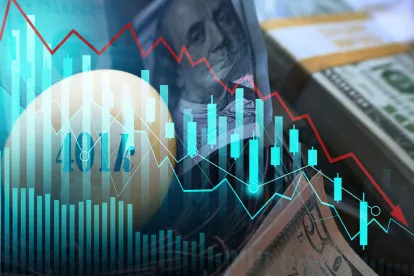The SECURE 2.0 Act of 2022 (SECURE 2.0) significantly changes the legal and administrative compliance landscape for U.S. retirement plans. Foley & Lardner LLP is authoring a series of articles that take a “deep dive” into key SECURE 2.0 provisions that will affect how employers structure and administer their 401(k) plans, pension plans, and other types of employer-sponsored retirement plans.
In our prior SECURE 2.0 articles, we have discussed student loans and 401(k) plan matching contributions, changes designed to simplify plan administration, changes to the minimum required distribution rules, and eligibility rules for part-time employees in 401(k) plans. This month, we discuss additional changes that will help make plan administration simpler and other changes that are possible or that become effective under SECURE 2.0 after December 31, 2023.
Increase in Cash-Out Limit
Brief Overview. SECURE 2.0 increases the current dollar limit on amounts that may be transferred from former participants’ qualified defined contribution plan accounts or from their accrued benefits in a qualified defined benefit plan to an individual rollover retirement account (IRRA) without consent, from US$5,000 to US$7,000. This is effective for distributions made after December 31, 2023.
Items to Think About. Plan sponsors should review their plan documents to understand whether the current plan limit will automatically increase and if amendments to the plan or plan operations are necessary. Plans are not required to implement the increase.
Amendments to Increase Benefit Accruals Under a Plan for a Previous Plan Year are Now Allowed Until the Plan Sponsor’s Tax Return Due Date
Brief Overview. The SECURE Act permits an employer to adopt a new qualified retirement plan by the due date of the employer’s tax return for the fiscal year in which the plan becomes effective. Current law, however, provides that plan amendments to an existing qualified retirement plan must generally be adopted by the last day of the plan year in which the amendment is effective. Thus, current law precludes a plan sponsor from adding plan provisions that may be beneficial to participants after the end of the plan year for with it is to be effective. SECURE 2.0 amends this provision to allow discretionary amendments that increase participants’ benefits to be adopted after the end of the plan year as long as such amendments are adopted by the due date of the plan sponsor’s federal tax return next following that plan year. This is effective for plan years beginning after December 31, 2023.
Item to Think About. This change does not apply to increases in matching contributions to a 401(k) plan.
Age 50 Catch-up Contributions Must Be Roth for Certain Participants
Brief Overview. Under current law, for participants over the age of 50, catch-up contributions to a qualified retirement plan can be made on a pre-tax or Roth basis if permitted by the plan. SECURE 2.0 provides that, if age 50 catch-up contributions are permitted under the plan, then the contributions must be made on a Roth basis for employees whose wages from the same employer (as defined for Social Security FICA tax purposes) were greater than US$145,000 (indexed for future tax years) in the prior tax year. This is effective for taxable years beginning after December 31, 2023.
Items to Think About. Plan sponsors will need to review and update their payroll procedures for employees whose wages will be greater than US$145,000 (as indexed) in 2023. The catch-up contributions for affected participants must be allocated to a Roth source on the recordkeeper’s system.
Safe Harbor for Corrections of Employee Elective Deferral Failures
Brief Overview. Under current law, employers that adopt a retirement plan with automatic enrollment and automatic escalation features could be subject to significant penalties if even honest mistakes are made. The Internal Revenue Service previously issued guidance on the correction of failures relating to default enrollment of employees into retirement plans. This guidance includes a safe harbor, which was due to expire December 31, 2023, that permits correction if notice is given to the affected employee, correct deferrals commence within certain specified time periods, and the employer provides the employee with any matching contributions that would have been made if the failure had not occurred. SECURE 2.0 allows for a grace period to correct, without penalty, reasonable errors in administering these automatic enrollment and automatic escalation features. Errors must be corrected prior to the nine and a half months after the end of the plan year in which the mistakes were made. This provision is effective for errors after December 31, 2023.




 />i
/>i

